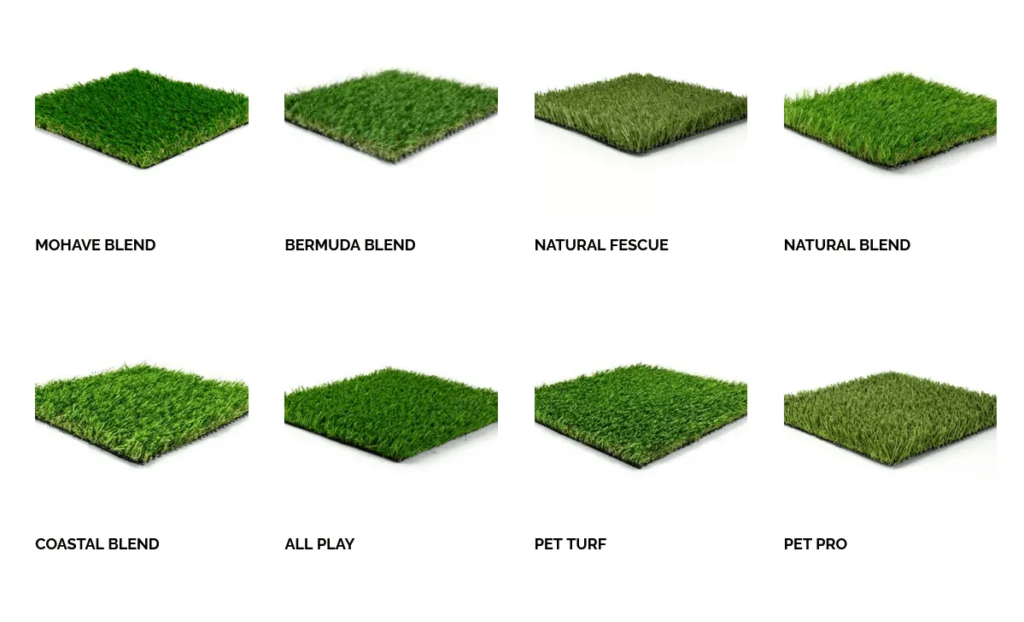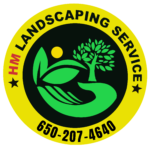
When it comes to artificial turf, there are many brands and types available, each with different qualities in terms of appearance, durability, and usage. Here are some popular brands and types of artificial turf:
Popular Artificial Turf Brands:
- SYNLawn
- Known for its high-quality synthetic grass with various options for landscaping, sports fields, and pet areas.
- Fake Grass
- Offers a wide variety of synthetic turf products with realistic looks and high durability for both residential and commercial use.
- AstroTurf
- One of the pioneers in artificial grass, AstroTurf is widely used in sports fields, including football and soccer, as well as residential landscaping.
- Turf Factory Direct
- Specializes in a range of synthetic grass options, including those for pets, landscaping, and playgrounds. They offer turf at competitive prices.
- EasyTurf
- Known for its realistic appearance and top-tier quality, EasyTurf is used in residential, commercial, and athletic applications.
- ForeverLawn
- A premium brand offering turf for landscaping, pets, sports fields, and even golf greens. Known for its variety of products designed for different uses.
- ProGreen
- Offers a range of artificial grass options for residential lawns, sports fields, and commercial applications. They are known for high-quality, long-lasting turf.
- Global Syn-Turf
- One of the largest manufacturers of synthetic turf, Global Syn-Turf offers a wide range of options, from residential to commercial and athletic turf.
- Royal Grass
- Known for their natural-looking turf, Royal Grass focuses on premium quality products, often used in landscaping, with a focus on sustainability.
- GTR (Green Turf Revolution)
- GTR offers high-end artificial grass products that look and feel natural, providing options for both residential and commercial applications.
Types of Artificial Turf:
- Landscape Turf
- Designed for aesthetic purposes to mimic natural grass. Often used in residential lawns, commercial landscapes, or public spaces.
- Pet Turf
- Specially designed to handle the wear and tear from pets. It typically has a more durable backing and features a more permeable drainage system to handle pet waste.
- Sports Turf
- Used for sports fields, such as soccer, football, or golf. It’s made to withstand heavy foot traffic and can be made with various pile heights depending on the sport.
- Putting Green Turf
- Specifically designed for creating synthetic golf greens. This turf is generally shorter and has a denser, smooth finish to simulate the feel of a real putting green.
- Playground Turf
- Soft and durable artificial grass designed for playgrounds. It’s often combined with padding or shock-absorbing material beneath it to ensure child safety.
- Luxury Turf
- High-end turf designed for aesthetics and often used in upscale residential and commercial landscaping. It offers a very realistic look and feel.
Installing artificial turf can be a great way to create a low-maintenance, attractive lawn. The process can be a bit involved, but it’s definitely manageable with the right tools and preparation. Here’s a detailed guide on how to install artificial turf:
Materials You’ll Need:
- Artificial turf
- Landscape fabric (weed barrier)
- Crushed rock or decomposed granite (base material)
- Sand (optional for leveling)
- Turf adhesive or seam tape
- Turf nails or staples
- Utility knife
- Rake or shovel
- Level
- Tamper (manual or plate compactor)
- Measuring tape
- Chalk line or string for marking
Step-by-Step Guide:
1. Prepare the Area
- Clear the Area: Remove any existing grass, weeds, or debris from the area where you’ll install the turf. You can use a shovel, rake, or even a sod cutter for larger areas.
- Grade the Soil: Ensure the area is level or slightly sloped for proper drainage (ideally, about 1–2% slope away from structures like buildings or walls). You can add or remove soil to achieve the correct grade.
- Install a Weed Barrier: Lay down a landscape fabric (weed barrier) to prevent weeds from growing through the turf. Make sure it overlaps at seams and extends beyond the area to be turfed.
2. Install the Base Layer
- Add Base Material: Spread a layer of crushed rock, decomposed granite, or gravel (typically 3–4 inches deep). This material will provide stability and drainage for your artificial turf.
- Level the Base: Use a rake to spread and level the base material evenly across the area. A level or long board can help you ensure the surface is smooth and at the correct slope.
- Compact the Base: Use a manual tamper or a plate compactor to compact the base layer. This will ensure that the material is firm and will prevent shifting under the turf.
3. Lay the Artificial Turf
- Roll Out the Turf: Unroll your artificial turf on top of the prepared base. Let it relax for a few hours to eliminate any creases or folds. Lay the turf in the desired direction (typically, against the longest line or in the direction where it will be most visible).
- Cut to Fit: Use a utility knife to trim the turf to fit the area, especially around edges, corners, and obstacles like trees or fences.
- Join Sections (if applicable): If you have to use multiple pieces of turf, lay the sections next to each other with about 1/2-inch overlap at the seams. Use seam tape or turf adhesive to join them. Apply the adhesive and press the edges together securely.
4. Secure the Turf
- Turf Nails or Staples: Use turf nails or staples to anchor the turf along the edges and throughout the seams. Space the nails about 6-8 inches apart along the perimeter and more frequently at seams to ensure a tight hold.
- Ensure Tightness: Pull the turf taut as you secure it to avoid wrinkles or gaps.
5. Add Infill (Optional)
- Apply Sand or Rubber Infill: Some types of artificial turf require an infill (typically a layer of sand or rubber granules) to help keep the grass fibers upright and improve durability. Use a broadcast spreader to distribute the infill evenly across the turf. Brush the surface with a broom to work the infill into the fibers and ensure it settles into the turf.
- Brush and Fluff the Turf: After adding infill, use a broom or power brush to fluff up the turf fibers and help them stand upright. This will also help distribute the infill evenly.
6. Final Touches
- Check for Imperfections: Walk around the turf and check for any loose spots, gaps, or uneven seams. If necessary, use additional turf nails or adhesive to secure them.
- Clean the Turf: Give the turf a final brush to ensure the fibers are standing upright and everything looks neat.
- Trim the Edges: Once everything is in place, trim any excess turf around the perimeter for a clean, finished look.
Maintenance Tips:
- Regularly brush the turf to keep the fibers standing tall.
- Remove any debris (leaves, twigs, etc.) with a leaf blower or broom.
- Periodically check the infill level, as it can settle over time, especially with rubber or sand infills.
- Wash the turf occasionally with water to remove dust and dirt.
Optional Add-Ons:
- Edging: You can install edging (such as plastic or metal border strips) along the perimeter to keep the turf in place and create a neat, defined edge.
- Drainage: If you’re concerned about drainage, ensure the base layer is properly compacted and that the ground beneath the turf is well-drained. You can also use perforated pipe or add more slope if needed.
Conclusion:
Artificial turf installation can be a bit labor-intensive, but it’s a rewarding process that leaves you with a low-maintenance, durable lawn. The key steps are proper preparation of the base and ensuring the turf is secured well to avoid shifting over time.
